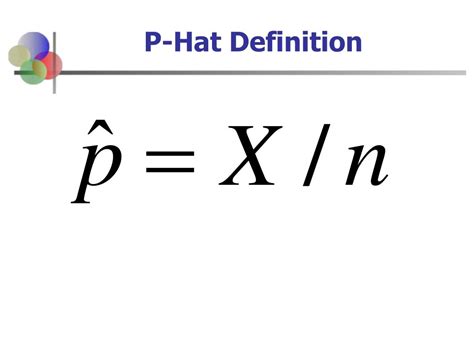5 Ways Trump Impacted DACA and Dreamers' Futures
The Deferred Action for Childhood Arrivals (DACA) program has been a contentious issue in the United States for over a decade. Established in 2012 under the Obama administration, DACA allowed certain young undocumented immigrants, known as Dreamers, to remain in the country without fear of deportation. The program was a significant step towards providing a pathway for these individuals to integrate into American society. However, the future of DACA has been uncertain due to various legal and political challenges. One of the most significant impacts on DACA and Dreamers' futures has come from the administration of President Donald Trump. Here, we explore five ways Trump impacted DACA and Dreamers' futures.
Rescission of DACA: A Turning Point
In September 2017, the Trump administration announced its decision to rescission DACA, which would have led to the deportation of hundreds of thousands of Dreamers. This move was a direct attack on the program that had allowed Dreamers to live and work in the United States. The decision was met with widespread criticism and sparked a national debate about the fate of Dreamers. According to the Migration Policy Institute, at the time of the rescission announcement, there were approximately 800,000 active DACA recipients in the United States.
Court Battles and Legal Challenges
The rescission of DACA led to a series of court battles and legal challenges. In January 2018, a federal judge in California ruled that the Trump administration's decision to end DACA was unlawful, and ordered the administration to reinstate the program. This decision was later upheld by the 9th U.S. Circuit Court of Appeals. The legal challenges continued, with the U.S. Supreme Court eventually agreeing to hear the case in November 2019. The Supreme Court's decision, announced in June 2020, ruled that the Trump administration's rescission of DACA was unlawful, providing a temporary reprieve for Dreamers.
Key Points
- The Trump administration's rescission of DACA in 2017 would have led to the deportation of hundreds of thousands of Dreamers.
- The decision was met with widespread criticism and sparked a national debate about the fate of Dreamers.
- Court battles and legal challenges ensued, with a federal judge ruling that the Trump administration's decision was unlawful.
- The U.S. Supreme Court ultimately ruled that the Trump administration's rescission of DACA was unlawful.
- The decision provided a temporary reprieve for Dreamers, allowing them to continue living and working in the United States.
Restrictions on New DACA Applications
In addition to the rescission of DACA, the Trump administration also imposed restrictions on new DACA applications. In 2018, the U.S. Citizenship and Immigration Services (USCIS) began rejecting new applications for DACA, citing the ongoing court battles and legal challenges. This move was seen as a further attempt to restrict the program and limit the number of Dreamers who could benefit from it. According to data from USCIS, the number of new DACA applications decreased significantly in 2018, with only 1,495 applications filed, compared to 40,000 in 2017.
Impact on Dreamers' Futures
The uncertainty and restrictions surrounding DACA have had a significant impact on Dreamers' futures. Many have been forced to live in limbo, unsure of their status and unable to plan for their futures. A survey conducted by the National Association of Latino Elected and Appointed Officials (NALEO) found that 71% of Dreamers reported feeling anxious or stressed about their future, while 60% reported feeling uncertain about their ability to remain in the United States. The uncertainty has also had economic implications, with research suggesting that the loss of DACA could lead to a loss of $460 billion in GDP over the next decade.
| Economic Impact | Data |
|---|---|
| Loss of GDP | $460 billion over 10 years |
| Number of DACA Recipients | Approximately 800,000 |
| New DACA Applications (2018) | 1,495 |
Renewal Process and Work Permits
The Trump administration also made changes to the DACA renewal process and work permits. In 2019, USCIS began requiring DACA recipients to apply for a new work permit, rather than simply renewing their existing one. This move was seen as an attempt to further restrict the program and limit the number of Dreamers who could benefit from it. According to data from USCIS, the number of DACA renewals decreased significantly in 2019, with only 64% of eligible recipients renewing their status.
Legislative Efforts and Future Prospects
Despite the challenges posed by the Trump administration, there have been ongoing legislative efforts to provide a pathway to citizenship for Dreamers. In 2019, the House of Representatives passed the American Dream and Promise Act, which would have provided a pathway to citizenship for Dreamers. However, the bill stalled in the Senate. The future of DACA and Dreamers remains uncertain, with ongoing court battles and legislative efforts.
What is DACA?
+DACA, or Deferred Action for Childhood Arrivals, is a program that allows certain young undocumented immigrants, known as Dreamers, to remain in the United States without fear of deportation.
How many Dreamers are there in the United States?
+According to the Migration Policy Institute, there are approximately 1.8 million Dreamers in the United States.
What is the current status of DACA?
+The current status of DACA is uncertain, with ongoing court battles and legislative efforts. The U.S. Supreme Court has ruled that the Trump administration’s rescission of DACA was unlawful, but the program remains in limbo.



